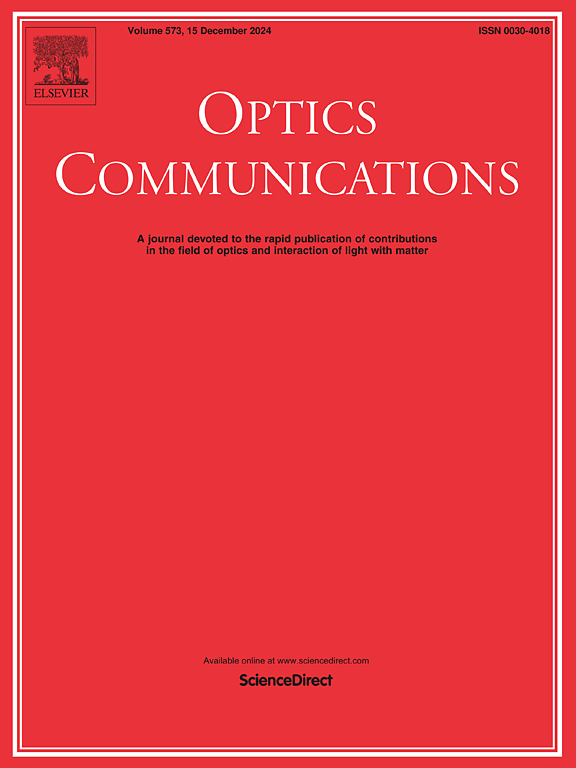A general stitching measurement for stereo deflectometry
IF 2.2
3区 物理与天体物理
Q2 OPTICS
引用次数: 0
Abstract
A slope stitching algorithm is proposed to fulfill the measurement of a large object under the limited field of view in a stereo deflectometry system. The tested object can be easily divided into three sub-apertures under a unique world coordinate system w.r.t. the valid regions of the two cameras. Then the sub-apertures are stitched via slopes instead of point cloud. And, to produce a much smoother slope in the common regions of two cameras, a weighted average method is used to guide the merging process of the slope. The method expands the measurement area into a binocular combination area without the need for predefined markers or moving any devices. Experimental results confirm the feasibility and efficiency of our proposed algorithm, highlighting its advantages in testing large-size optical elements with high accuracy and cost-effectiveness.
用于立体偏转测量的通用缝合测量法
本文提出了一种斜率拼接算法,用于在立体偏转测量系统的有限视场下测量大型物体。在一个唯一的世界坐标系下,根据两台相机的有效区域,可以很容易地将被测物体划分为三个子孔径。然后,通过斜坡而不是点云对子孔隙进行拼接。此外,为了在两台相机的共同区域内生成更加平滑的斜率,还使用了加权平均法来指导斜率的合并过程。该方法无需预定义标记或移动任何设备,即可将测量区域扩展为双目组合区域。实验结果证实了我们提出的算法的可行性和效率,凸显了该算法在测试大尺寸光学元件时的高精度和低成本优势。
本文章由计算机程序翻译,如有差异,请以英文原文为准。
求助全文
约1分钟内获得全文
求助全文
来源期刊

Optics Communications
物理-光学
CiteScore
5.10
自引率
8.30%
发文量
681
审稿时长
38 days
期刊介绍:
Optics Communications invites original and timely contributions containing new results in various fields of optics and photonics. The journal considers theoretical and experimental research in areas ranging from the fundamental properties of light to technological applications. Topics covered include classical and quantum optics, optical physics and light-matter interactions, lasers, imaging, guided-wave optics and optical information processing. Manuscripts should offer clear evidence of novelty and significance. Papers concentrating on mathematical and computational issues, with limited connection to optics, are not suitable for publication in the Journal. Similarly, small technical advances, or papers concerned only with engineering applications or issues of materials science fall outside the journal scope.
 求助内容:
求助内容: 应助结果提醒方式:
应助结果提醒方式:


